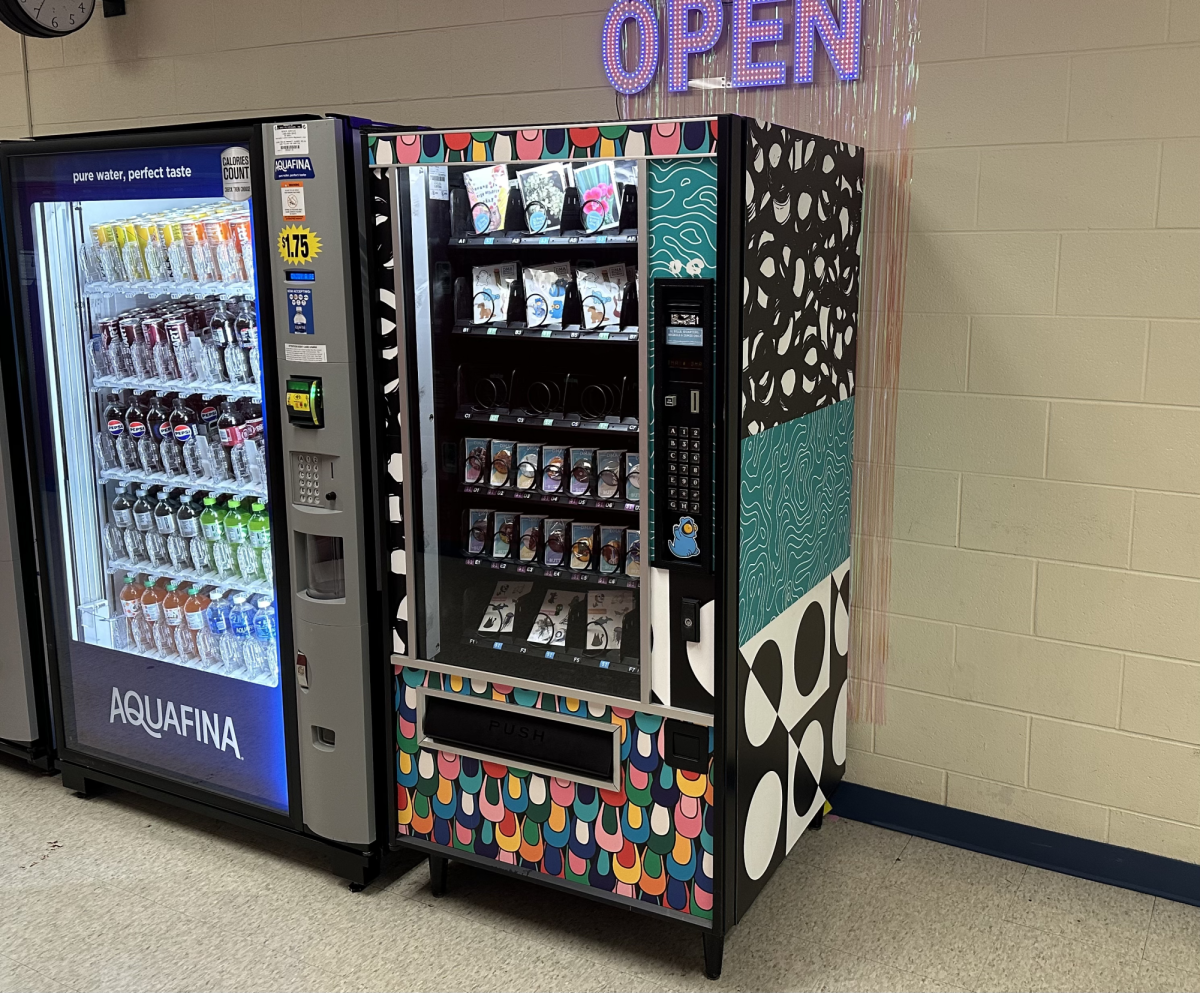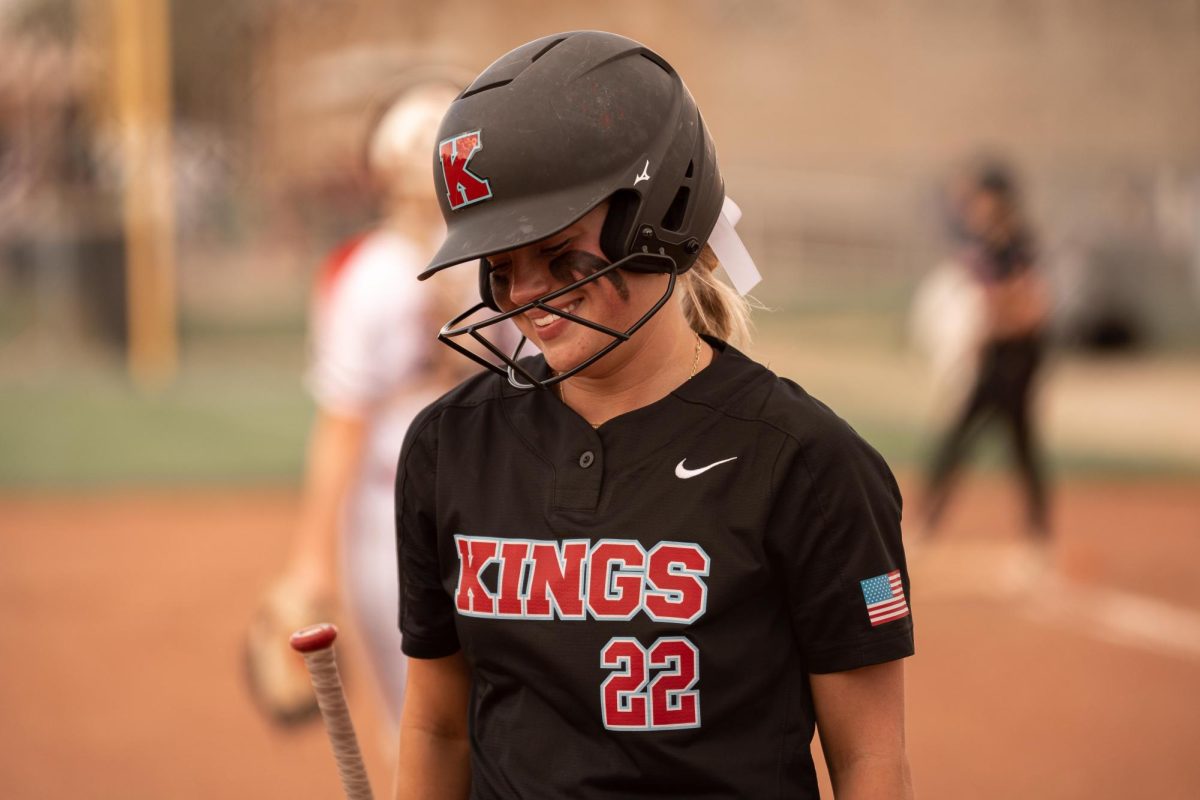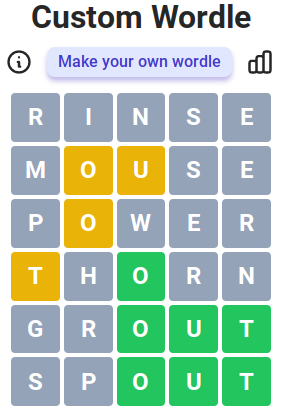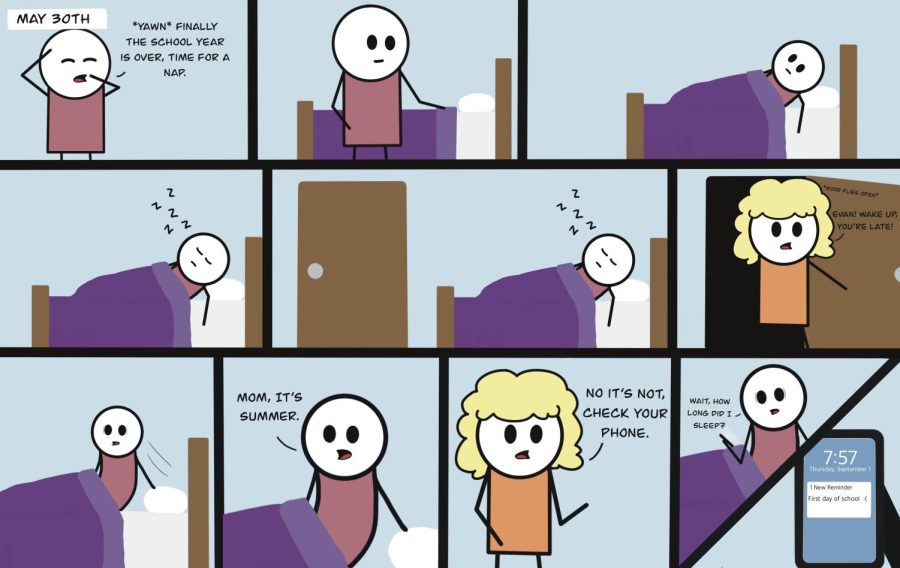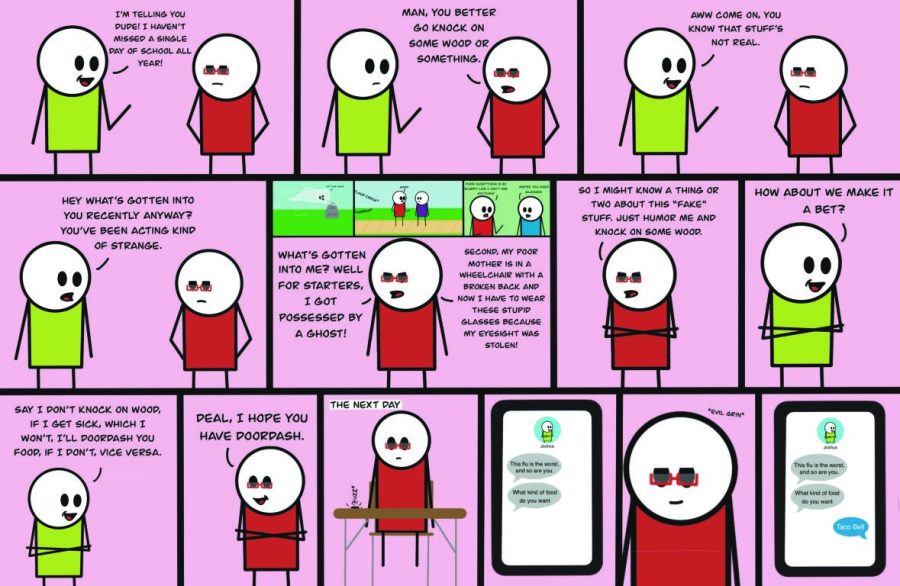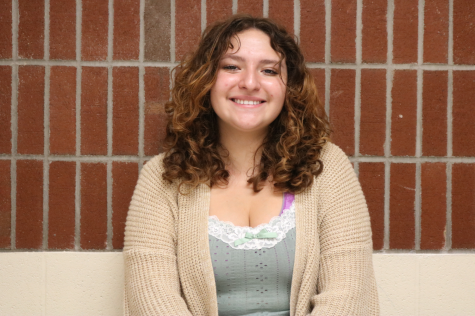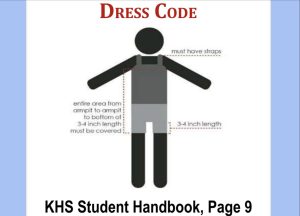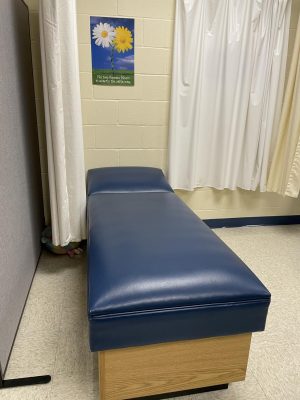Teacher stress continues three years post pandemic shut downs
Teacher Sarah Hennessey teaches a lecture about adult development to her psychology class. It’s common for teachers to feel the need to wear a smile in front of their students even with their overwhelming stressors.
February 25, 2023
Her alarm wakes her up at 4:45 a.m. every weekday morning. She does the same routine; gets out of bed, pumps breast milk for her baby, finishes the usual bathroom tasks, and helps her kids get ready. By 6:15 a.m. they all walk out the door. She drops her kids off at their school and daycare, then drives to school, her job and her source of income.
With two kids to care for, Joy Mcgee pays triple what it takes to live as a single person. The financial burden of Daycare, food, housing bills, and the aftermath of a stolen car weighs heavily on McGee’s mind.
With the political, cultural, and social environment rapidly changing education, teachers everywhere report that they feel more stress than usual, and Kings educators are no exception.
In the last six to seven years, tensions heightened over operational and bond issue levies that needed to pass, which impacted staffing and facilities. Additionally, during contract negotiations, teachers and staff came up against salary freezes, re-negotiated transportation programs and higher healthcare costs, and on top of this, an unexpected pandemic.
In a Knight Times survey, 72% of teachers and staff said that those two years of covid negatively impacted their mental health, and in a survey run by the Centers for Disease Control and Prevention, 53% of teachers nationally said they wanted to leave the profession after the pandemic hit.
Teachers told the Knight Times that 2020 was one of the most “mentally draining” years to teach.
Chemistry teacher Eric Wellman said, “[Covid] took the human element out of teaching, and most of us go into teaching to impact people’s lives. In my opinion, the point of teaching is not forming stellar algebra or biology students, it is to form good people. And it was hard to do that with a ‘Zoom’ call.”
Although the job is demanding, English teacher Ryan Weber does not regret becoming a teacher. He explains that while teaching can become monotonous at times, “mixing it up” each year prevents burnout. Teachers never turn off the “teacher part of themselves” until summer break. Weber says that summer break is “critical” for educators because they have to turn it off at some point.
Other teachers use their summer break to prepare for the next school year and work during the weekends to perfect their lessons, and take on extra responsibilities like advising clubs, compounding their stress and burnout.
“Many people probably think it’s an easy job, but it’s pretty demanding. All of your mental energy goes into what you do, so once you leave you’re pretty exhausted, and you bring that home with you. I know a lot of teachers that don’t sleep well because of all that’s on their plate,” said Weber.
McGee explains that having personal concerns can impact anyone, teacher or not. Feelings of not doing enough at both work and home take their toll on any human being, but especially teachers, who are responsible for a diverse range of people.
“At the beginning of the school year, I had FOMO, I didn’t know what to expect when I came back [to school after the maternity leave]. And then when I finally did, I was panicking. I had to put my baby in daycare, and spend 10 hours away from him 5 days a week,” McGee says.
Kings Social Emotional Health Coordinator Kim Sellers agrees that more support is needed for teachers struggling in the district.
“The wellness of our district is a priority, and over the last several years, we’ve planned some initiatives to offer more support for our teachers. It’s more important now than ever since mental health impacts everyone everywhere, and teachers are not immune to this,” Sellers said.
“Struggles with mental health, particularly stress, are not new for public educators,” says Dr. Sarah E. Cummins-Sebree, Academic Unit Head of the Behavioral Science Department at the University of Cincinnati. Cummins-Sebree also claims that research on mental health in education is typically focused on students, which may explain why educators are “overlooked” in this area.
In a survey from 2021 by the Ohio School Wellness Initiative (OSWI), “respondents shared that their schools focused almost twice on student wellness than they did on staff wellness,” and physical and emotional health were the top two priorities for staff members under wellness.
Dr. Cricket Meehan, the executive director of the Ohio School-Based Center of Excellence for Prevention & Early Intervention for Miami University, told the Knight Times that the main concern of the OSWI was how the staff’s “concerns and anxiety” correlated with the aftermath of the pandemic and returning to “normalcy.” She also stated that there are similarities in the results of the Knight Times survey and the OSWI survey.
Cincinnati’s Children’s Hospital offers an “Emergency Psychiatric Intake” for students through the district, and according to Sellers, they have been full and at capacity. Though, staff members are exempt from this “perk.”
“We focus on students because that’s what we do, focusing on student’s needs is our priority,” Counseling Department chair Heidi Murray said, “However, we overlook the caretakers. If the teachers have to care for the students, someone has to care for them, or they have to take care of themselves.”
Taking breaks is important to disengage from focusing only on jobs and lead minds away from stressors. Social studies teacher and club(s) advisor Elisa King perfected the art of decompressing, “You must listen to your body and mind and ask yourself what you need to relieve stress. It’s like a sort of therapy. I have a book club with my friends, and I’ll go outside because the grayness outside adds to the depressive or tired feelings,” King said.
Sarah Hennessey, a psychology teacher who teaches a fitness class for EvoFit in the mornings, believes exercise is essential for maintaining good emotional health. English teacher Jonathan Bitzer does improvisation to let loose after having to keep a filter around students for almost seven hours per day. Bitzer also teaches in the smallest classroom in the high school.
“[The classroom size] forces me to think about space and practical things like walking around and not tripping on backpacks. Though a benefit is that they cap off my classes at 26 students, it’s not uncommon for others to have 31 or 32 kids in their classes,” Bitzer said.
Murray adds that a program called “Squires” is offered to teachers. Staff members put together gatherings to “unify and pick up the morale of the staff.” Wellman is one of the teachers who organizes “Jolly Trolly,” which comes around to teachers’ classrooms every other Friday morning with snacks and “goodies” to start the day on a good note.
“From a teacher’s standpoint,” Hennessey says, “You have to put your personal issues to the side when you come to work because there is no room to bring that into the classroom.”





